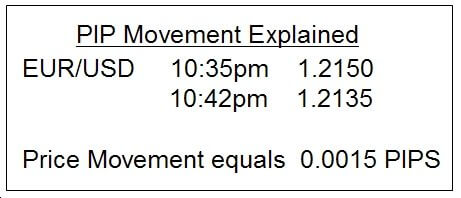Forex Transaction Basics
Today I want to cover some Forex transaction basics then we will discuss the four major pairs and their trading times. This Forex Trading Education series is set up for every trader and over the next few months, you can expect to see a variety of topic covered from the simplest concepts to some of the more complex strategies that are used.

So let’s talk about some Forex Transaction basics. First of all, before we can trade we must establish a relationship with a Forex broker by depositing funds in a margin account. A margin account allows us to leverage our money 50.1 in the US and as much as 400.1 at some international brokerage firms. At 50.1 this means for every $1000.00 dollars we have in the market we are controlling $50,000.00 worth of currency. However, we are only responsible for our $1000. The Currency market moves in increments called PIPS (price index points). The value of a PIP is calculated by the broker’s state of the art Dealing Station and varies from one currency to another. Currency units are divided into 100 parts. 1 pip is equal to 1/100th of a currency unit.
When trading on the Forex we are trading currency Lots. 1 lot represents $100,000.00 of another country’s currency. The amount of leverage available from most brokers is 50.1. Using this leverage $1000.00 will control 1 lot of any given currency. If the broker’s dealing station has valued the EUR/USD at $10 per PIP and we sell the EUR/USD then we will make $10.00 for every PIP the market goes down and lose $10 for every pip the market moves up. You may be asking yourself how we can sell something we don’t own. Brokers use terms like buy and sell to distinguish market position however they are not in the literal sense. If we enter the market selling then we are anticipating it to go down. If we enter the market buying then we anticipate the market to go up.
The Four Majors
There are many currencies available to trade (approximately 16 on most dealing platforms); however, 85% of all trading volume occurs on the following four pairs:
- EUR/USD (Euro/US Dollar)
- GBP/USD (Greater British Pound/US Dollar)

- USD/CHF (US Dollar/Swiss Frank)
- USD/JPY (US Dollar/Japanese Yen)
One of the major advantages to the Forex over comparable markets is the fact that you do not have thousands of items to choose from when selecting a trade. Therefore, you can focus your studies on a select few. This allows you to become familiar with the way a specific currency moves. Each currency pair has an average daily range and volatility level. The following is the daily average range of the four majors:
- EUR/USD 120 Pips
- GBP/USD 142 Pips
- USD/CHF 150 Pips
- USD/JPY 92 Pips
What does this mean for a trader? This means that, on average, in any given 24 hour period one can expect the specific currency combination to move within a range equal to the average daily range. We can use this information to trade by analyzing the current market movement since Midnight eastern. For example, if the EUR/USD has been trading in a range of 40 pips since midnight, it is currently 8:45 AM, and the market breaks out of this range then it is a safe assumption that it will make an attempt to travel an additional 80 pips. Keep in mind that these averages can fluctuate. So that’s it for today’s post but stay tuned. My next post in this Forex Trading Education series will be on emotions which are a very important part of trading.







